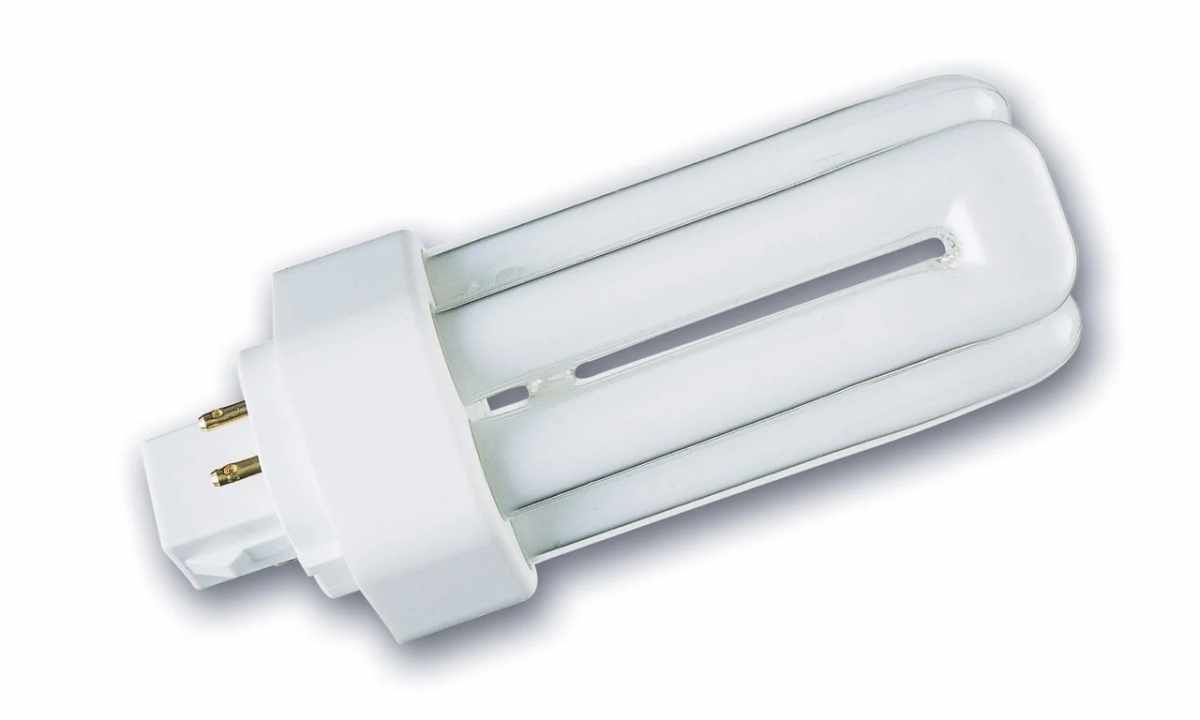Fluorescent lamps every day become more and more popular among residents of Russia. High light return and life cycle favourably distinguish them from normal glow lamps.
The fluorescent lamps presented at the market of lighting equipment can be separated into two categories conditionally: linear and compact. The first actively are established for illumination of industrial and commercial premises from the middle of the last century. For house use linear lamps have received much smaller distribution because of the impressive sizes and connected with it difficulties of interior registration.
The size matters
Gas discharge lamps have begun the triumphal procession in far 1926, thanks to developments of the German engineer Edmund Dzhermer who has created and patented lamp of uniform luminescence with use of phosphor. The American corporation General Electric, having redeemed the patent, in 1938 has adjusted serial release of these products.
Producers and developers of the linear fluorescent lamps (LFL) always sought for reduction of their sizes, keeping at the same time the power of luminous flux.
Creation of the compact luminescent lamp (CLL) became possible in the early eighties the twentieth century, thanks to development of production techniques of qualitatively new phosphors from rare-earth metals. It has allowed to reduce diameter of gas-filled tubes to 12 mm without loss of quality of light characteristics. Has become possible, having bent tubes or having twirled them in spiral, to make the sizes of luminescent lamps comparable to the sizes of normal glow lamps. The compact bulb has been patented in 1984.
Device of compact fluorescent lamps
Two basic elements are part of the compact preserving lamps: Flask. Filled with mix of inert gas and vapors of mercury. Contains the tungsten electrodes covered with oxides of calcium, barium and strontium. Mercury vapors as a result of electric discharge generate radiation in the ultra-violet range. The phosphor which has covered inside face of glass tube under the influence of ultraviolet radiates light seen to human eye. Socle. Has more than 20 various configurations which can be separated into two views: with the built-in puskoreguliruyushchy equipment and without. Socles of the first type – threaded, E14 standard (minion) or E27 (as at normal glow lamps). The second look is provided by two- or four-pin connectors. It is usually used in the table lamps having the built-in PRA. In this case to certain power of lamp there corresponds the special configuration of socle.
Key parameters of KLL
Carry the power, color temperature, color rendition and term of operation to the main characteristics of compact lamps.
The most widespread lamps have the power of 5, 9, 15, 20 and 23 W.
With increase in power also the luminous efficiency grows. For binding of luminous efficiency of energy saving lamps to glow lamps use coefficient 5. For example, the luminous flux of the fluorescent lamp, 15 W corresponds to stream of 75-cotton LN, 20 W – 100 W, etc. However, the concept ""power saving"" in relation to KLL with the advent of more low-energy LED and induction bulbs sounds not really correctly. Color temperature – the characteristic determining color tonality of light radiation in degrees by Calvin's scale: - 2700-3300K – warm, yellow-white light, - 4200-5500K – cold, white light, - over 6500K – day, white-blue light. The color rendition on packings of compact lamps is specified in conventional units of color rendering index of Ra with value from 0 to 100 (or 10). The index is higher, the more natural the objects lit with lamp look. KLL life cycle declared producers makes 8000-10000 hours that quite is confirmed by responses of users. The cost of qualitative lamp cannot be low, even set for its assembly rather expensive.
To users for record
Compact LL have the system of adaptive (smooth) start-up therefore the full brightness of luminescence is reached 2 min. later after inclusion. Lighting instrument has to work without blinking and rumble (or cracklings). Manifestation of one of these symptoms – sure sign of the fact that shortly the lamp should be replaced. Application of KLL imposes increased requirements to the used switches. The starting current of lamps in hundreds of times is exceeded by the worker and can quickly reach 2A. It is also extremely undesirable to use this type of lighting equipment in electrical circuits with light dimmers (brightness regulators) and with switches with LED indication. Compact LL have optimum life cycle only under certain conditions the environment: temperature 20-25C, normal humidity. Considerable deviations from normal temperature range, dampness (for example at installation in kitchen, the bathroom) significantly reduce resource. Gas-filled lamps need special order of utilization. There are special collection points for the fulfilled and faulty devices.

